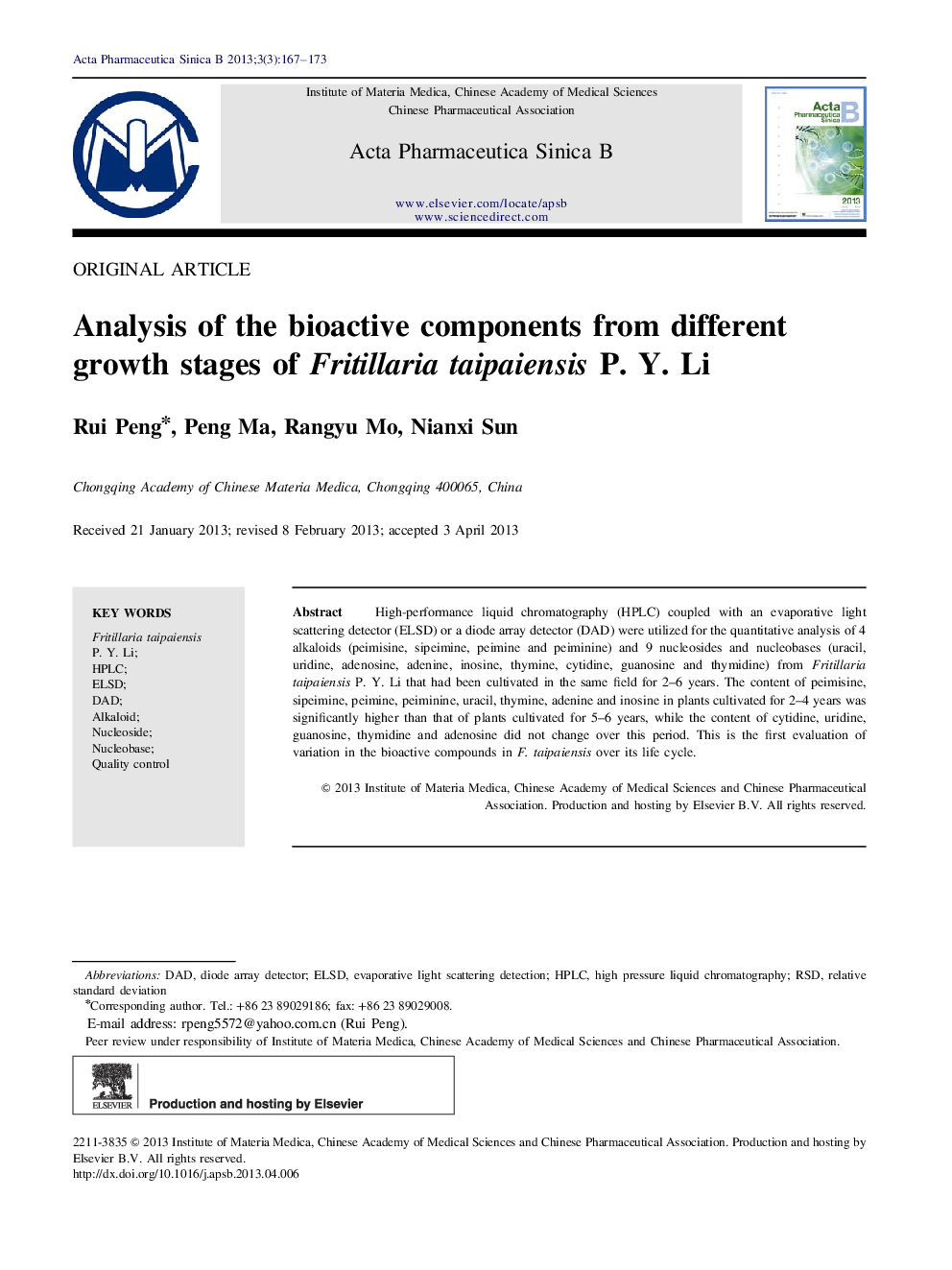| Article ID | Journal | Published Year | Pages | File Type |
|---|---|---|---|---|
| 2474591 | Acta Pharmaceutica Sinica B | 2013 | 7 Pages |
High-performance liquid chromatography (HPLC) coupled with an evaporative light scattering detector (ELSD) or a diode array detector (DAD) were utilized for the quantitative analysis of 4 alkaloids (peimisine, sipeimine, peimine and peiminine) and 9 nucleosides and nucleobases (uracil, uridine, adenosine, adenine, inosine, thymine, cytidine, guanosine and thymidine) from Fritillaria taipaiensis P. Y. Li that had been cultivated in the same field for 2–6 years. The content of peimisine, sipeimine, peimine, peiminine, uracil, thymine, adenine and inosine in plants cultivated for 2–4 years was significantly higher than that of plants cultivated for 5–6 years, while the content of cytidine, uridine, guanosine, thymidine and adenosine did not change over this period. This is the first evaluation of variation in the bioactive compounds in F. taipaiensis over its life cycle.
Graphical abstractAn HPLC-ELSD and an HPLC-DAD were developed for quantitative analysis of 4 alkaloids and 9 nucleosides and nucleobases. The validated methods were applied to quantify the active constituents of Fritillaria taipaiensis P. Y. Li cultivated in the same field for 2–6 years. The active constituents were present in higher levels in the early growth stage rather than the late stage of Fritillaria bulbs, in accordance with the preferred use of smaller bulbs under the guidelines of traditional Chinese medicine. Figure optionsDownload full-size imageDownload as PowerPoint slide
